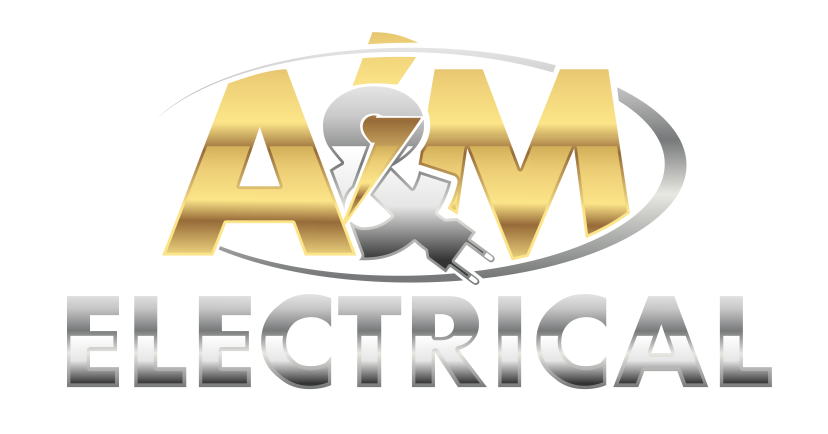If Your Electrical Panel Looks Like This, Watch Out!
Aaron Wham • August 28, 2023
If your panel has orange-handled breakers like this, read on...
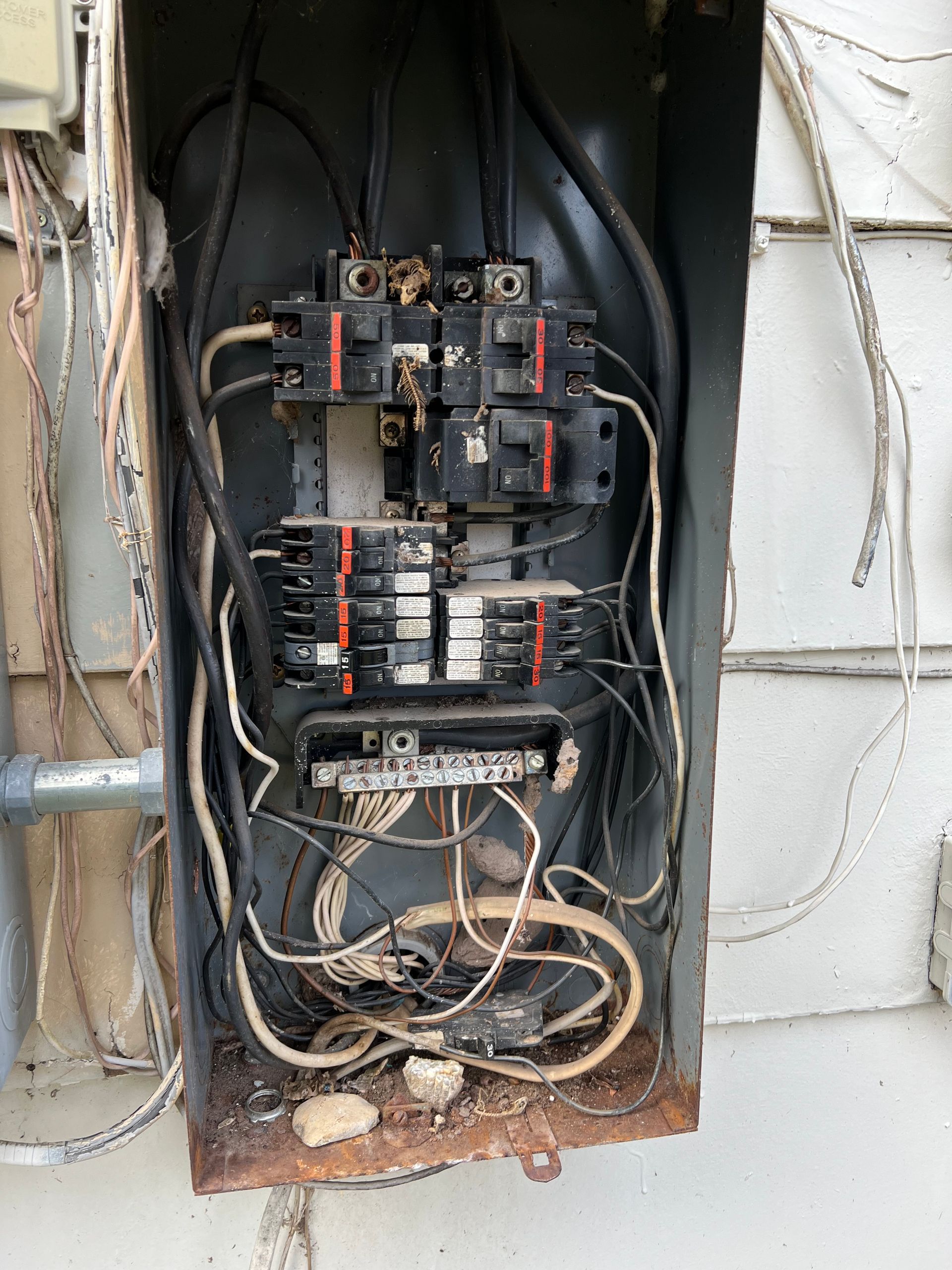
The Hidden Danger Lurking in Your Home: Federal Pacific Breaker Panels
Your home's electrical system is the backbone of modern living, powering everything from your lights and appliances to your gadgets and heating/cooling systems. But what if your electrical system harbors a hidden danger that could jeopardize your safety? This is precisely the case with Federal Pacific breaker panels.
What are Federal Pacific Breaker Panels?
Federal Pacific Electric (FPE) was a manufacturer of electrical panels and circuit breakers popular in North America during the mid-20th century. Unfortunately, over time, these panels have gained notoriety for their safety issues, particularly the Stab-Lok circuit breakers they contained.
The Problem with Stab-Lok Breakers
The primary issue with Federal Pacific breaker panels revolves around their Stab-Lok circuit breakers. These breakers were designed to trip and disconnect electrical circuits when overcurrent or short circuits occurred. However, extensive research and testing have shown that Stab-Lok breakers often fail to do their job effectively.
1. Breaker Failure:
One of the most concerning issues with Stab-Lok breakers is their tendency to fail to trip when they should. This means that in the event of an electrical overload or short circuit, the breaker might not disconnect the power as intended, posing a significant fire hazard.
2. Fire Risk:
Due to their poor tripping performance, Federal Pacific breaker panels have been linked to a higher risk of electrical fires. When these breakers fail to trip, the excessive electrical load can generate heat, causing wires to melt and ignite nearby flammable materials.
3. Lack of Certification: FPE lost its UL (Underwriters Laboratories) certification for Stab-Lok breakers in the 1980s. This loss of certification further highlights the safety concerns surrounding these panels. Some insurance companies will not even insure a home with these panels today.
4. Aging Panels:
Federal Pacific panels are now quite old, and aging components can exacerbate safety issues. Over time, the circuit breakers and connections within these panels can deteriorate, increasing the risk of malfunctions and electrical hazards.
What Should You Do If You Have a Federal Pacific Panel?
If your home still has a Federal Pacific breaker panel, it's crucial to take action:
1. Have it inspected by a qualified electrician:
A professional electrician can evaluate the condition of the panel and its breakers, identifying any potential hazards.
2. Consider replacement:
In many cases, the best course of action is to replace the Federal Pacific panel with a modern, safer electrical panel. This investment in your home's safety is well worth it, considering the potential risks associated with these panels.
Your safety and peace of mind are priceless. Call us today at 940-390-7606
and we will send out one of our professionals to evaluate your panel and present you with the options you need.

4th of July Electrical Safety Tips: Stay Shock-Free This Summer” Summer fun should never come with sparks — unless they’re in the sky. The 4th of July is a time for grilling, gathering, and gazing at fireworks. But all that celebration can push your home’s electrical system to its limit. Here are a few quick safety tips to keep your family safe and your party powered: 🔌 1. Use Outdoor-Rated Cords Only Many folks don’t realize extension cords are not one-size-fits-all. Outdoor-rated cords are built to withstand heat, moisture, and wear. Always check the label! ⚠️ 2. Don’t Overload Outlets Plugging in too many appliances or decorations can trip a breaker—or worse, start a fire. Space things out and unplug items when not in use. 🧼 3. Keep Water and Cords Apart Kiddie pools, sprinklers, water balloons — they don’t mix well with electricity. Make sure cords are clear of wet areas, and if possible, elevate them to stay dry. ✅ 4. Test Your GFCIs Ground Fault Circuit Interrupters (those “reset” outlets in kitchens, baths, and outdoors) are your first defense against shocks. Press “test” and “reset” before the big day to make sure they’re working properly. 🧰 5. Know Your Limits If your breaker panel looks like it came with the house in 1975, it might be time for a checkup. Aging systems can struggle with modern electrical loads. Need help before your big BBQ? Give A&M Electrical Services a call ! We proudly serve Corsicana and surrounding areas — from holiday checkups to full panel upgrades. 🔗 Contact Us Today! at 940-390-7606 Have a safe and sparkling Independence Day! — The A&M Team 🇺🇸⚡
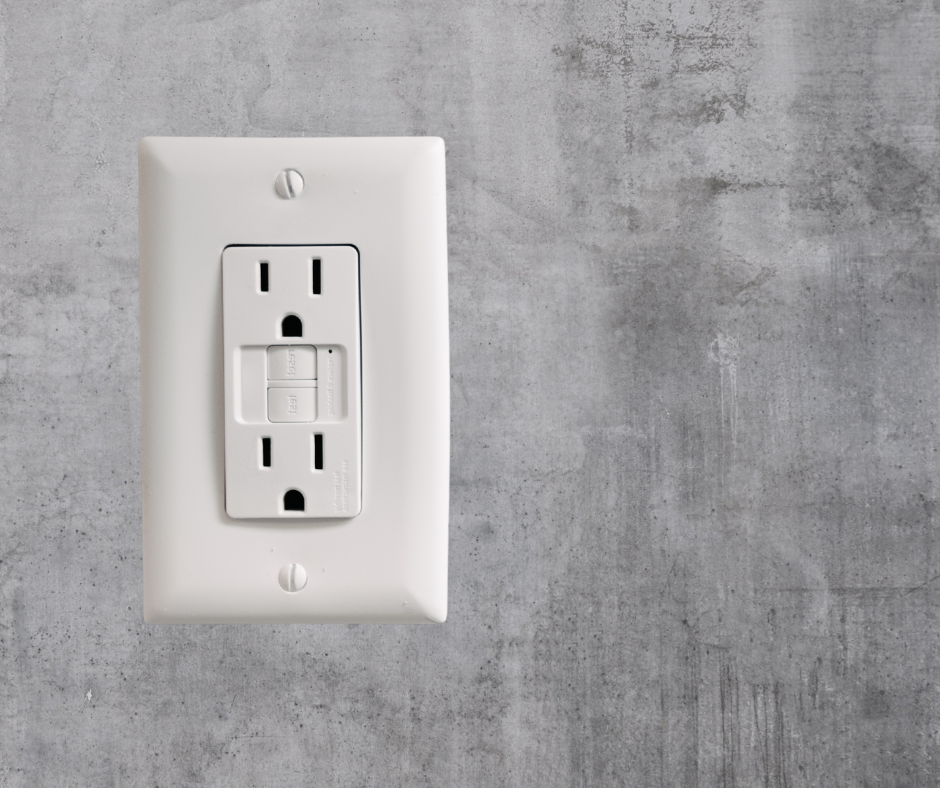
Outlets Through the Ages: When to Update Your Home’s Electrical Receptacles Your home’s electrical outlets may seem like a small detail, but they’ve come a long way over the years—and knowing what you have (and what you should have) is key to keeping your home safe and up to code. Old Two-Prong Outlets: If your home still has those older two-prong outlets, it’s time to consider an upgrade. These outlets don’t have a grounding wire, which means they offer less protection from electrical shock or damage to electronics. Most modern appliances and chargers require three-prong outlets, so holding on to the old ones isn’t just unsafe—it’s also inconvenient. Three-Prong Outlets: Three-prong outlets became standard in the mid-20th century and offer a grounding path for excess electricity. If your home was built after the 1960s, chances are you’ve got these throughout. However, even these may need updating if they’ve worn out or are loose, cracked, or discolored. GFCI Outlets: Ground Fault Circuit Interrupter (GFCI) outlets are now required by code in areas where water is present—like kitchens, bathrooms, laundry rooms, garages, and outdoor spaces. These outlets are easily recognizable by their “reset” and “test” buttons. GFCIs monitor the electrical current and shut off instantly if there’s an imbalance, reducing the risk of shock. If your kitchen still has standard outlets near the sink, it’s definitely time for a change. Newer Options: Today’s outlets come in all shapes and sizes to meet modern needs. Want to charge your phone without a power brick? Install a USB outlet. Want to future-proof your home? Consider tamper-resistant or smart outlets that work with home automation systems. When to Replace Outlets: If your outlets are warm to the touch, emit a burning smell, have black marks, or don’t hold plugs securely—those are signs it’s time to call a licensed electrician. Also, if your home’s electrical system hasn’t been inspected in over 10 years, an update could protect both your property and your peace of mind. At A&M Electrical Services , we’re here to help bring your home up to date and keep your family safe. Give us a call at 940-390-7606 for an outlet inspection or upgrade today!

Customer Q&A: Top 7 Electrical Myths—Busted by A & M At A & M Electrical Services, we’ve heard it all—from DIY daredevils to well-meaning homeowners passing down “helpful tips” that are more spark than sense. So today, we’re setting the record straight by busting seven of the most common electrical myths we hear right here in Corsicana and around Navarro County. Myth #1: If it works, it’s safe. Truth: Just because your outlet is powering your coffee maker doesn’t mean it’s up to code. Outdated wiring, missing grounds, or overused circuits may be one flicker away from becoming a fire hazard. Myth #2: A power strip is the same as a surge protector. Truth: Nope! A power strip only gives you more outlets. A surge protector guards your appliances from voltage spikes—especially important during Texas thunderstorms. Myth #3: You can use a 3-prong plug with a 2-prong adapter just fine. Truth: Those little gray adapters may seem convenient, but they often bypass proper grounding, which is essential for safety. This quick fix could lead to big trouble. Myth #4: If the breaker keeps tripping, just reset it. Truth: A breaker that trips repeatedly isn’t being moody—it’s warning you that something’s wrong. Constant resets are like putting a Band-Aid on a broken arm. Myth #5: DIY wiring is cheaper and just as good. Truth: While YouTube might show you how to wire a ceiling fan, it won’t show you what’s behind your walls—or the fire risk of doing it wrong. Trust us, we’ve seen the aftermath. Myth #6: All electricians are the same. Truth: Not quite. At A & M, we’re licensed, insured, and local. That means we know Texas codes, we know Corsicana homes, and we stand behind every job with integrity. Myth #7: Flickering lights just mean you need a new bulb. Truth: Maybe—but it could also mean loose wiring, overloaded circuits, or bigger panel issues. Don’t ignore the signs! Need the truth about your home’s electrical system? Let’s talk. At A & M Electrical Services, we believe in honest answers, no scare tactics, and electrical work that’s done right the first time. Whether you’ve got questions, flickering lights, or just want a second opinion, give us a call today at 940-390-7606 . ⚡ Serving Corsicana and surrounding areas with expert residential and commercial electrical work.

Powerful Effects of Little Fans 🕰️ A Brief Spin Through History Ceiling fans have been around since the 1800s, originally powered by running water and pulley systems before electricity became the norm. By the early 1900s, electrically powered fans became a staple in Southern homes and businesses. Over time, they evolved from clunky workhorses to quiet, sleek, and even smart-home-compatible appliances. ⚙️ Then vs. Now Today’s ceiling fans are lightyears ahead of their old-school ancestors. With efficient DC motors, remote controls, and energy-saving LED lighting, they use a fraction of the energy. Many even carry the ENERGY STAR® label, which means less power and more savings. 💵 The Texas-Sized Savings Everything’s bigger in Texas—including the A/C bill. Running a ceiling fan costs just $1.50 to $5/month, while A/C can hit $100–$300/month. By using fans and raising your thermostat by just 4 degrees, you could save up to 15% on cooling costs. That’s $200–$400 a year back in your pocket. Now that’s a breeze worth catching. 🌬️ 🧰 A Smart Upgrade Ceiling fans cool people, not rooms—so they’re perfect when you’re home, and nearly useless when you’re not. Combine that with proper direction settings (yes, fans spin differently in summer and winter), and you’ve got year-round comfort with pennies on the dollar. Whether you're swapping an old fan or wiring one into a brand-new space, A & M Electrical Services has you covered. Stay cool, save money, and skip the wobbly DIY install. Call Today! 📞 940-390-7606 A & M Electrical Services – Professional. Local. Reliable.
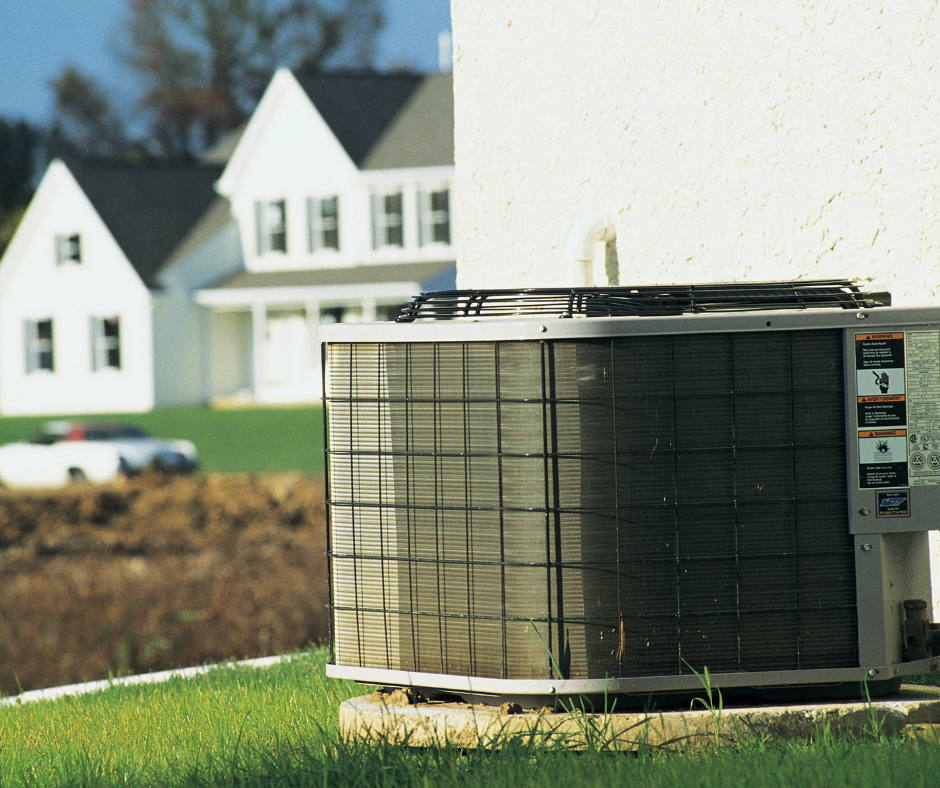
Is Your Breaker the Right Size? Why It Matters—Especially for Your A/C Condenser “Does it really matter what size breaker I use?” The short answer? Absolutely. Using the correct breaker size isn’t just about staying within code—it’s about protecting your home, your appliances, and your peace of mind. One of the most common issues we see here in Texas is oversized breakers being installed for air conditioner condensers. It might seem harmless—after all, if it’s bigger, it must be better, right? Not exactly. Here’s the deal: breakers are designed to trip (shut off) when the current flowing through a circuit gets too high. This prevents overheating, wire damage, or even fires. But if the breaker is too large for the wire or appliance it’s protecting, it might not trip when it’s supposed to. That means your A/C condenser could be cooking itself from the inside out before you ever notice a problem. A/C units come with a manufacturer’s label that lists the Maximum Overcurrent Protection Device (MOCP)—basically, the largest breaker you should ever use for that unit. If the label says 30 amps, that’s your ceiling. Installing a 40-amp breaker just because "it was available" could void your warranty and potentially damage the unit beyond repair. Unfortunately, this breaker problem is found on many homes, especially on older systems or DIY installs. If the AC is not original to the house, there is a good chance it is wrong. Sometimes it’s done to stop nuisance tripping, but that’s treating the symptom—not the cause. If you’re unsure whether your system is protected properly, we’re happy to check it out. It’s a quick inspection that could save you a hefty repair bill—or worse. At A and M Electrical Services, we believe in doing it right the first time. Give us a call if you’ve got questions, or just want a second set of eyes on your setup. Your appliances (and your wallet) will thank you. 940-390-7606
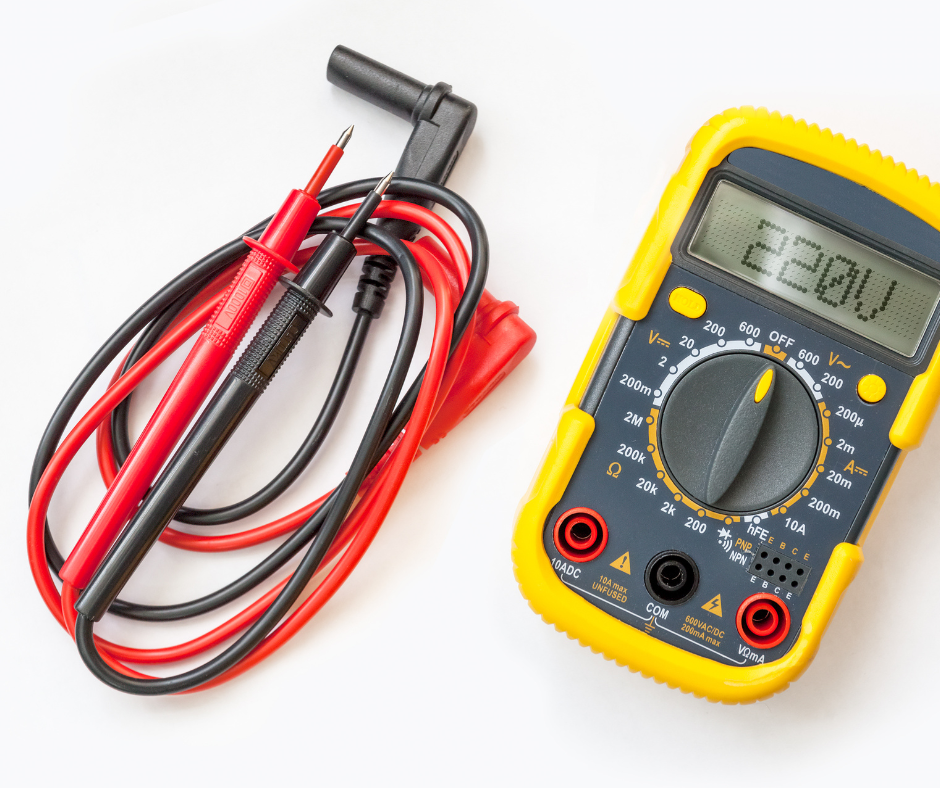
What’s a Multimeter—and Why Every Homeowner Should Know About One Whether you're a DIY enthusiast or just want to be a more informed homeowner, the multimeter is a tool worth knowing. It’s like a Swiss Army knife for electrical diagnostics—compact, powerful, and incredibly useful around the house. 🧰 What Is a Multimeter? A multimeter is a handheld device that measures voltage, current, and resistance. Most modern models are digital (often called DMMs—Digital Multimeters) and feature a simple screen with a dial to switch between functions. ⚡ AC vs. DC—What’s the Difference? AC (Alternating Current) is the type of electricity running through your home's outlets. If you're checking a wall socket, you'll be measuring AC voltage. DC (Direct Current) is found in batteries, solar panels, and some electronics. If you're testing a car battery or a power supply from a device, you’ll be using the DC setting. With a multimeter, you can test both—just switch to the correct symbol on the dial (typically “V~” for AC and “V⎓” for DC). 🏡 How Can You Use It Around the House? Here are just a few practical uses for a multimeter at home: Check if an outlet is live before plugging in or making repairs Test batteries to see if they’re really dead or just playing possum Troubleshoot light switches or fixtures that aren’t working Verify continuity in fuses, wires, or extension cords Confirm voltage on HVAC components, thermostats, or appliances 🛍 What to Look for When Buying One If you’re in the market for a multimeter, look for these features: Auto-ranging: Makes measurements easier for beginners Clear digital display: Large, backlit screens are best Safety ratings: Look for CAT II or CAT III ratings for home use Durability: Rubberized casing helps if it ever takes a tumble Brands like Fluke, Klein, and AstroAI are great options for both pros and homeowners. Need help using your multimeter? Or maybe you'd rather not play electrician at all? Give us a call at 940-390-7606 — we serve homes all over Corsicana and North Texas, and we’re happy to lend a (well-insulated) hand! #CorsicanaElectrician #ElectricalSafety #DIYTips #Multimeter101
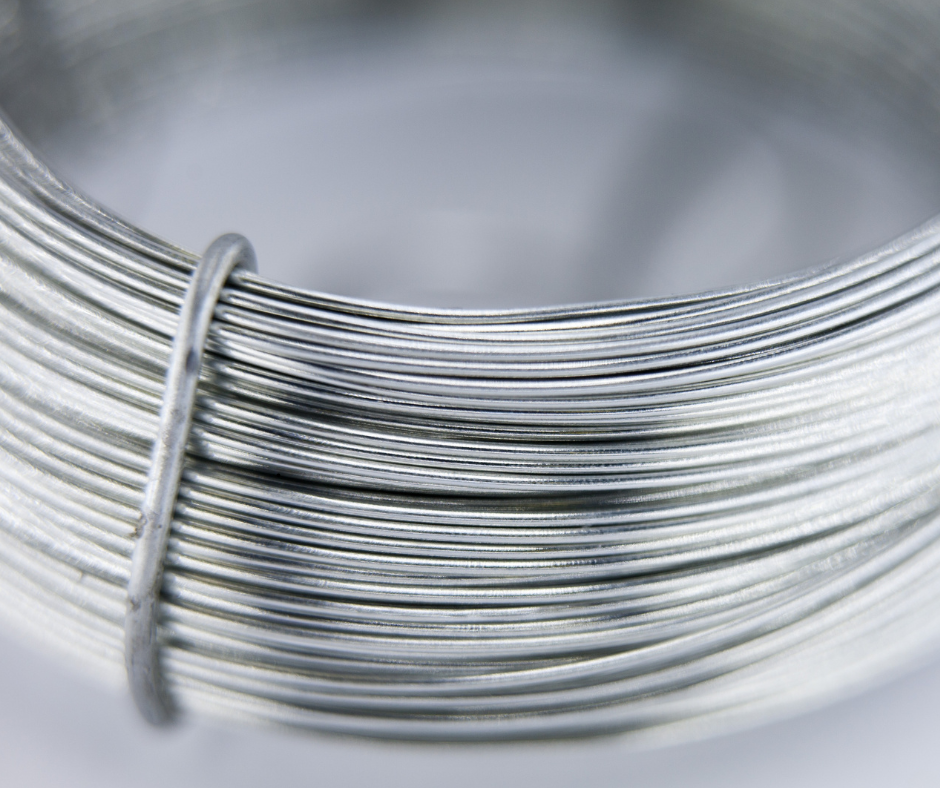
Is Your Home Wired for Trouble? What You Need to Know About Aluminum Wiring If your home was built between 1965 and 1973 , it may have a hidden fire hazard in the walls: solid strand aluminum wiring. This type of wiring was commonly used during that time when copper prices soared. Builders turned to aluminum as a cheaper alternative for branch circuits—those that power your lights, outlets, and small appliances. But what seemed like a cost-saving solution back then has since proven to be a major safety concern. 🔥 Why It’s Dangerous According to the U.S. Consumer Product Safety Commission (CPSC), homes with aluminum branch circuit wiring are up to 55 times more likely to have connection failures that could lead to fires. That’s not a typo—55 times. Here’s why: aluminum expands more than copper when it heats up. Over time, this loosens connections at outlets and switches, causing arcing and overheating. Add in aluminum’s tendency to oxidize (form a non-conductive surface) and creep (deform under pressure), and you’ve got a recipe for disaster—right inside your walls. 🏠 Is Your Home at Risk? If your home was built between 1965 and 1973—or even remodeled during those years—it’s worth checking your electrical system. You might notice: Warm or discolored wall plates Flickering lights Burnt-out light bulbs in fixtures The smell of burning plastic Even if you don’t see the signs, aluminum wiring can still pose a threat behind the scenes. 🛠 What Can You Do? Don’t panic—but don’t ignore it either. A & M Electrical Services can inspect your home and offer safe, code-compliant solutions. That might include AlumiConn connectors, CopAlum crimping, or recommending a full or partial rewire, depending on your situation. Solid aluminum wiring is one of those things that seemed like a good idea in the '60s—kind of like shag carpet. If you think your home might have it, give us a call . Let’s make sure your wiring isn’t a ticking time bomb.

“Peace of Mind at Home: The Gift That Lasts Longer Than Flowers” Mother’s Day may have passed, but the spirit of appreciation shouldn’t fade with the flowers. This week, many of us took time to celebrate the moms, grandmas, and women who hold our homes and families together. And while cards and brunches are great, the best way to show lasting love might just be a safer, more reliable home. After all, what mom wouldn’t love peace of mind? At A & M Electrical Services, we believe home safety is one of the most meaningful gifts you can give your family—especially as we head into the stormy season here in Texas. Little signs like flickering lights, warm outlets, or frequent breaker trips might not seem urgent, but they could be early warnings of electrical issues waiting to escalate. Taking care of them now means fewer headaches—and safer, happier days ahead. Here are a few practical upgrades that make a real difference: ✅ Breaker Panel Inspection – Older panels might not keep up with today’s demands. A quick check could save you from a future outage. ✅ GFCI Outlets in Kitchens & Baths – Crucial for safety in moisture-prone areas. ✅ Whole-Home Surge Protection – Texas storms don’t mess around. This keeps your electronics and appliances safe. ✅ Additional Outlets Where Needed – Still relying on power strips? Let’s fix that with properly placed, code-compliant outlets. Whether you’re a mom, live with one, or just want to show you care—this is a great time to make your home a little safer and a lot more comfortable. We’re here to help. 📞 940-390-7606 🔌 A & M Electrical Services – Reliable. Local. Family-focused.
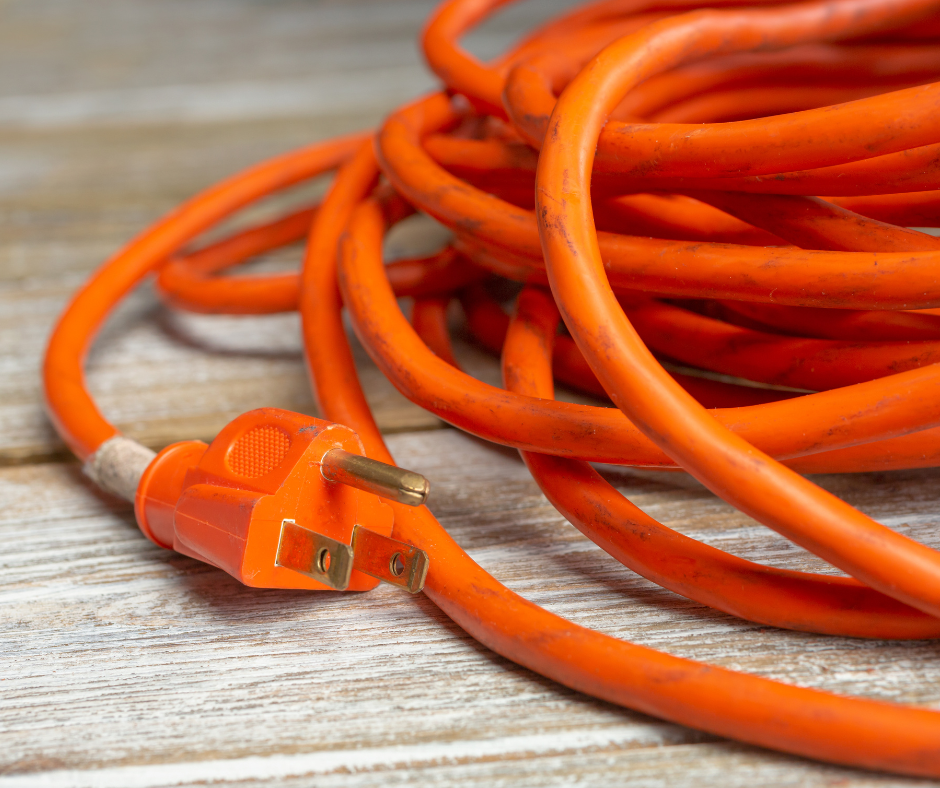
The Shocking Truth About Extension Cords: What You Need to Know Before You Plug In Let’s face it — extension cords are the unsung heroes of modern living. From holiday lights and backyard tools to makeshift office setups, these cords keep us connected (literally). But not all extension cords are created equal — and using the wrong one can lead to tripped breakers, fried equipment, or even fire hazards. Here’s what every homeowner should know before stretching that cord across the living room or out to the garage. 1. Indoor vs. Outdoor Cords First things first: where you use the cord matters. Indoor cords are typically lighter, thinner, and not designed to handle moisture or extreme temperatures. Outdoor cords are made with tough, weather-resistant jackets that protect against sun, rain, and physical wear. Pro tip: If the packaging or labeling doesn’t specifically say “outdoor rated,” don’t use it outside. 2. Know Your Cord Size (Gauge Matters!) Extension cords come in different gauges — the thickness of the wire inside. Here’s a quick cheat sheet: 16-gauge: Best for light-duty indoor use (like lamps or phone chargers) 14-gauge: Medium-duty; okay for power tools or vacuums 12-gauge: Heavy-duty; ideal for large appliances or outdoor tools 10-gauge: Extra heavy-duty; used for high-amp tools and longer distances The lower the gauge number , the thicker the wire — and the more power it can safely carry. Also, take cord length into account. The longer the cord, the more resistance and voltage drop. If you’re running a saw across the yard, go with a heavier gauge to avoid power loss. 3. Safety Features to Look For Don’t just grab any cord from the discount bin. Look for these safety features: Grounded plugs (three-prong): Reduces shock risk UL or ETL Listing: Shows the cord meets safety standards GFCI protection: Especially important for outdoor or damp-area use Locking ends or covers: Help protect connections from coming loose or getting wet 4. Extension Cord Don’ts Let’s keep it simple: Don’t plug one extension cord into another (a.k.a. "daisy chaining") Don’t run cords under rugs, through walls, or across doorways Don’t use damaged cords — frayed or cracked jackets are accidents waiting to happen Extension cords are handy tools, but they’re not permanent solutions. If you find yourself relying on one all the time, it might be time to install a proper outlet. That’s where we come in. A & M Electrical Services is your trusted local electrician, serving homes and businesses with safe, professional solutions that keep your power flowing. 📞 Call us today at 940-390-7606 to schedule a service or ask a question. We’re wired to help — safely and reliably.
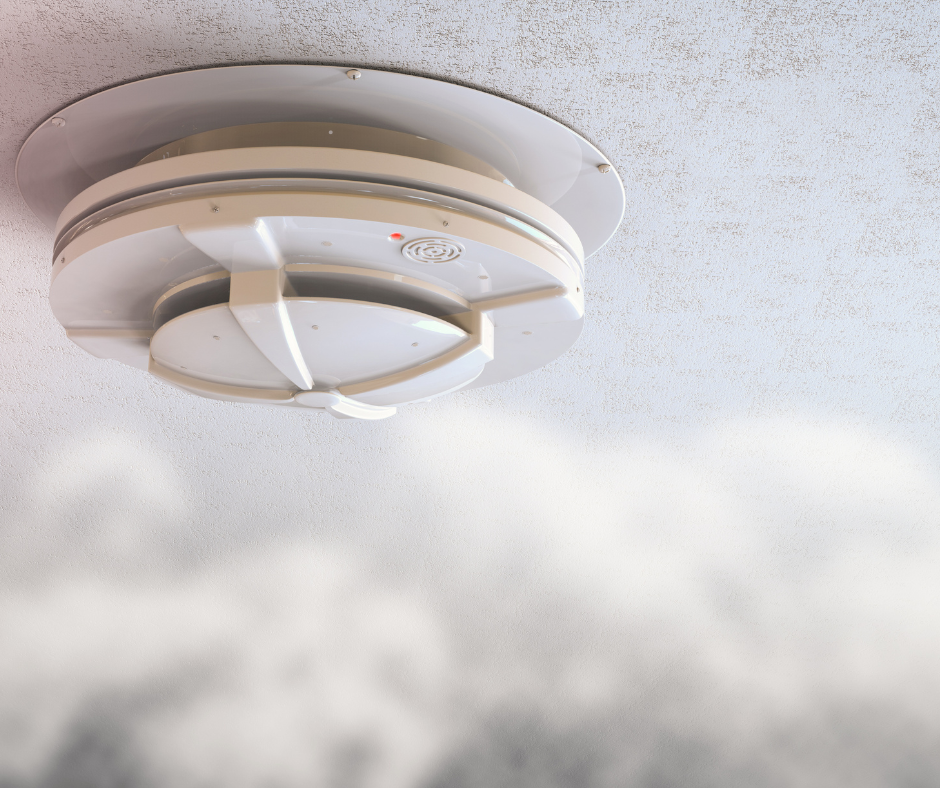
Is Your Home Really Safe? Two Electrical Checks You Shouldn't Skip This Spring Spring is the season of fresh starts — but while you're cleaning closets and planting flowers, don't forget to check two of the most important systems in your home: your smoke and carbon monoxide detectors and your electrical panel. These quick checks can prevent major problems, save you money, and most importantly, protect your family. Here's what you need to know: 1. Smoke and Carbon Monoxide Detectors: The Unsung Heroes of Home Safety Your smoke and CO detectors are your first line of defense in an emergency — but they can’t do their job if they’re dead or malfunctioning. Spring is the perfect time to: Test every detector in your home. (Most have a simple "test" button. Push and hold until you hear the beep!) Replace the batteries —even if they seem fine. A fresh set ensures they’ll work when it matters. Check the manufacture date. Smoke detectors should be replaced every 10 years; CO detectors every 5-7 years. If yours are older, it's time for an upgrade. Pro Tip: When in doubt, swap them out. Modern combination smoke/CO detectors are inexpensive, easy to install, and offer better protection with newer technology. 2. Electrical Panel: The Brain of Your Home’s Power Think of your electrical panel like the command center of your house. It directs electricity to every room, appliance, and gadget. But like anything else, it can wear out over time. Warning signs your panel might need attention: Circuit breakers trip frequently. Lights flicker or dim when large appliances kick on. You hear buzzing sounds from the panel. The panel feels warm to the touch. Even if you aren't seeing these red flags, a professional inspection every few years is smart — especially if you have an older home. An overloaded or outdated panel can be a hidden fire risk. Plus, upgrading your panel can set you up for future improvements like EV chargers, hot tubs, or backyard workshops. At A & M Electrical Services, we make safety simple. Call us today at 940-390-7606 to schedule a spring safety check — and enjoy the season knowing your home is protected from the inside out! #HomeSafety #SpringMaintenance #TrustedElectrician
